In the temperate regions of North America, there is a small tree called the shadbush. Its name originates from the synchronisation of its flowering cycle with the spawning of the shad, a type of fish, in nearby rivers. The shadbush is just one example of the multitude of ways that surrounding ecological processes lend their names to various culturally significant flora and fauna. However, due to the burgeoning climate crisis, several of these natural cycles and processes have become delayed or premature, making them lose their linguistic significance. If the shadbush is no longer flowering while the shad fish procreate, what is the point of its name?
Hidden beneath the stage of stories heralding the impact of the climate crisis on the economy and ecology lurks another, deeper concern: its influence on culture. Culture is everything that makes us who we are, from the food we eat and the clothes we wear to the gods we worship–and whether we worship gods at all. It is the monuments and places we consider our own, the stories we tell, and the unique connections that we form with the natural world. This impact on culture is the one that is not discussed enough– the changes to our monuments that are dismissed as inevitable wear-and-tear and the loss of traditional handicrafts that are written off as a sign of progress. While the climate crisis is making an indelible mark across the world, both through tangible effects that we see in our everyday surroundings, as well as intangible ones, this article will focus particularly on its ties to Indian culture.
Culture is so intimately linked to identity and a feeling of belonging. Starting with the foods we eat, the prayers we say, the songs we sing, the clothes we wear.
—Meera Iyer, Convenor,
Indian National Trust for Art and Cultural Heritage (INTACH)
Bengaluru Chapter
The Impact on Heritage We Can Touch, Feel, and See
The climate crisis manifests itself in a variety of ways, from changing temperatures and frequent disaster events to rising sea levels and acid rain. While our 5th grade geography lessons exposed us to a theoretical version of these natural processes, they are currently playing out at an unimaginable scale. Natural geographical processes, such as the freeze-thaw cycles, will become more frequent and intense due to warming global temperatures, hastening the erosion of ancient buildings. Changes in air temperature and humidity lead to corrosion of metals, while salt crystallisation can damage walls. Air pollution and acid rain erodes and dis-colours stone buildings, most famously the Taj Mahal, which has gone from pristine white to a dull brownish, greenish hue over the past 400 years.
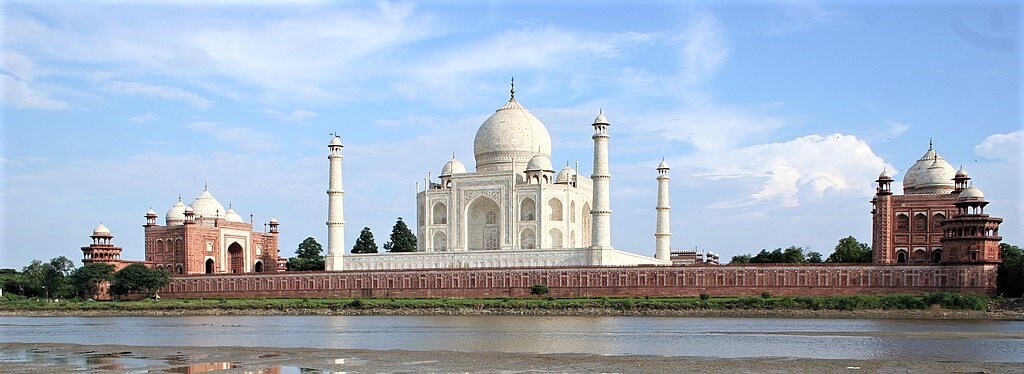
Sibghat Khan, founder of the Deccan Archive, in an interview with The Bastion, talks about how, in Hyderabad, “old buildings cannot withstand the amount of rain we are currently getting.” The Deccan Archive is an initiative that documents and preserves the Deccan’s cultural heritage. Khan describes his own experience of watching a structure collapse before his own eyes due to heavy rainfall—the force of the water not only batters the structure of the building but walls remain damp and fungus breeds in hidden corners, weakening the structures entirely. Golconda Fort in particular suffers a lot of damage, with crumbling bastions and destroyed sections, Khan mentions
The fort [Golconda] used to have two staircases, out of which one was a small, narrow staircase on the side. This staircase is 400-500 years old and got washed away in a flood a couple of years ago. Now it cannot be rebuilt, because every time it is put together again, the monsoons come and destroy it.
—Sibghat Khan
A study done in 2014 produced an extensive list of cultural heritage sites that are at risk due to rising sea levels. Amongst these locations scattered across the globe are five major monuments in India—the Elephanta Caves, the Konark Sun Temple, Chhatrapati Shivaji Terminus, monuments at Mahabalipuram, and the churches and convents of Goa—that we will lose to rising sea levels, a reality in the next few decades due to the escalation of global warming.
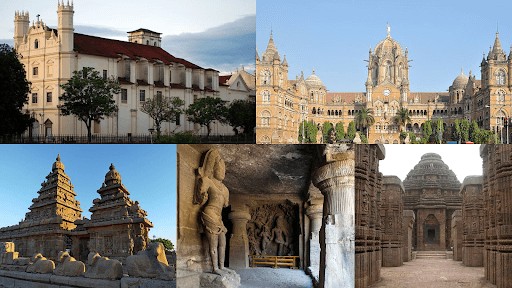
Handicrafts and Livelihoods are Struggling
While the most obvious and visible remnants of the past is where our glance first falls, we need only cast our net slightly wider to see the magnitude of change occurring to different elements of Indian culture. Traditional handicrafts, like Ajrakh block-printing technique in Gujarat, are being lost due to the changing climate. Ajrakh prints are traditionally worn by cattle herders for two reasons—the blues and greens of the Ajrakh patterns keep wild animals away, while the blue shade keeps them warm in winter and cold in summer. However, it takes 13 litres of water to produce just one metre of printed cloth. Due to the climate crisis, access to water is, quite literally, drying up.

Climate change has led to inconsistent monsoons, during which the average rainfall increases but the number of days of rainfall decreases. As a consequence, water levels in wells deplete rapidly, and the salinity of water increases, ruining the quality of the dye. Inability to access a stable, constant supply of water, which is currently decreasing at an average rate of 10 feet a year, is forcing several of these craftsmen to leave their age-old traditions. While the economic impacts of these changes are disastrous, the simultaneous extinction of irretrievable cultural practices is a lamentable new reality India has to contend with.
The narrative of people shifting away from engaging in traditional handicrafts to more stable jobs can be induced for other reasons, apart from lack of access to resources. “Craftsmen are paid by the hour for the amount of work that they do and summer temperatures, which now extend longer than welcome, become quite ghastly, making them a very low-productive time,” Smriti Morarka, a textile revivalist in Varanasi, tells The Bastion. Morarka mentions that there are other weather fluctuations that contribute to deteriorating conditions for craftsmen.
During the monsoon, infrequent but powerful deluges cause water to flood into the pit looms that local weavers use, making them lose precious hours of work while waiting for the water to dry. Therefore, craftsmen end up losing a lot of money due to no fault of their own.
—Smriti Moraka
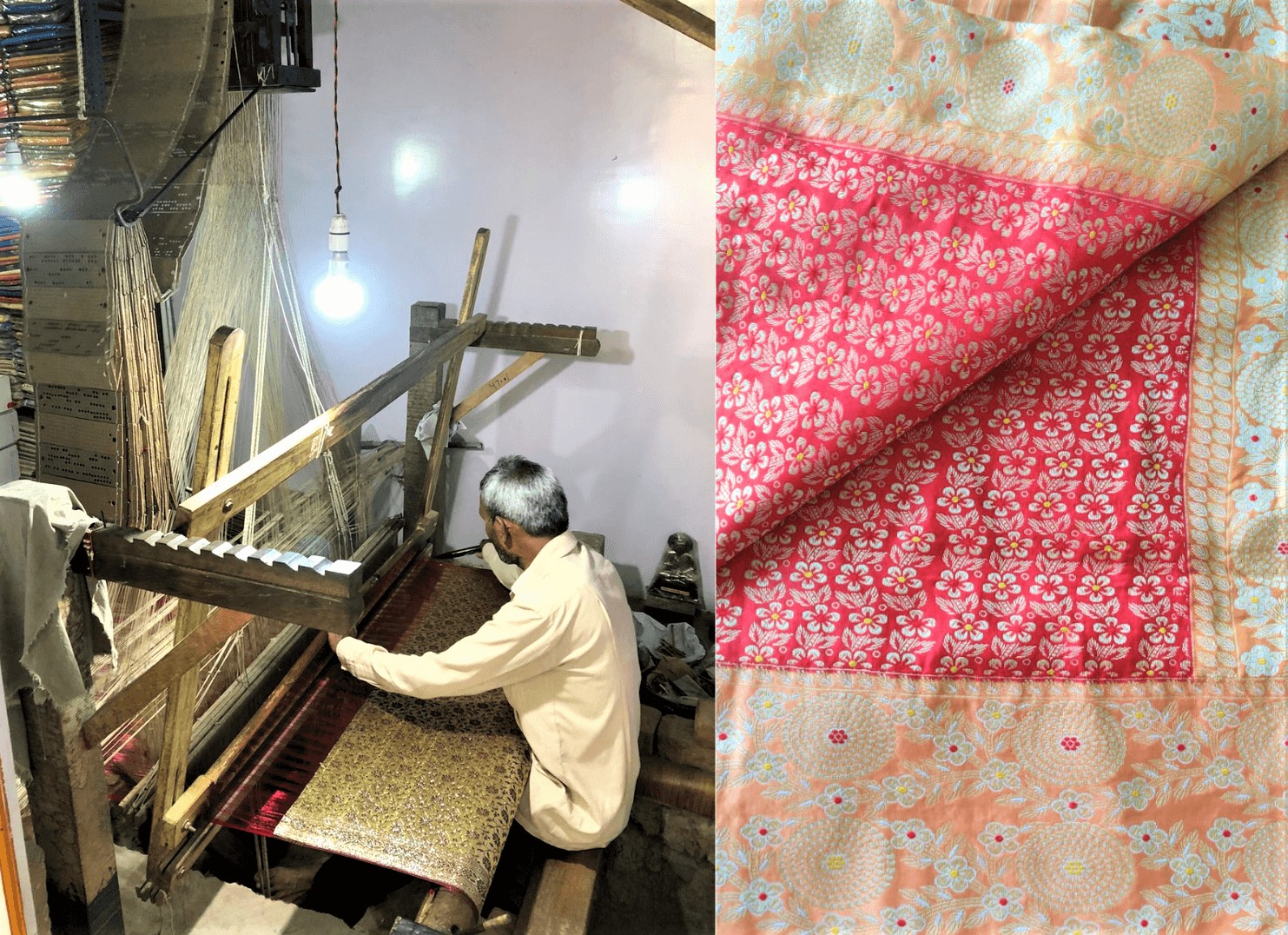
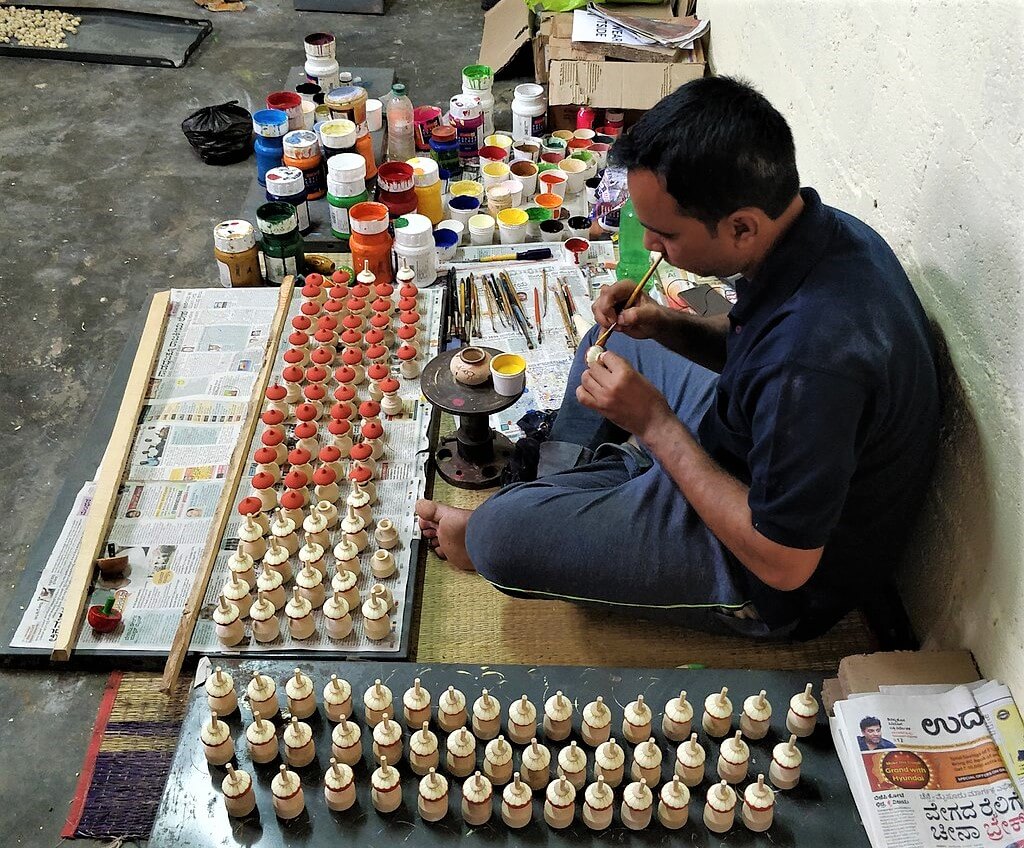
The loss of traditional livelihoods is an impact of the climate crisis that extends beyond just local craftsmen. The Brokpa community in Ladakh traditionally work as pastoralists and yak herders. An in-depth report, published by Mongabay-India, discusses how rising temperatures lead to decreasing fodder and drying water bodies. Additionally, longer summers and shorter winters change migration cycles, compounding the challenges that pastoralists face and causing them to move to different jobs. Yak herding itself causes no gender disparity, since men and women get equal access to resources. However, the report mentions that by moving to alternative jobs such as farming, trading, or menial labour in the monetised economy, women find it harder not only to find work but to also get equal pay for the same amount of work. Thus, a changing climate not only affects their livelihoods but the very essence of their social organisation gets altered.
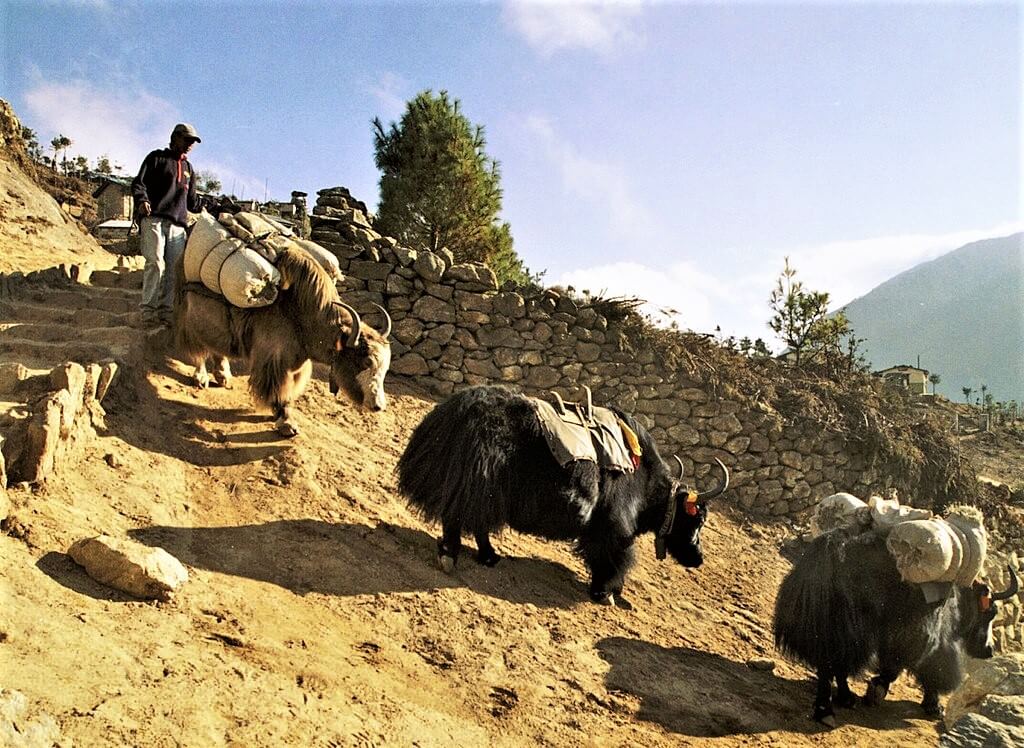
Smriti Morarka and Pavitra Muddayya, both of whom work on reviving local textiles through their companies Tantuvi and Vimor respectively, emphasise that another reason livelihoods are being lost is because the market for handicrafts doesn’t exist anymore. With the advent of globalisation, faster and cheaper products are in greater demand, pushing local craftsmen out of business. Thus, the system that created climate change works on two levels – by directly replacing local arts and crafts in the market and by creating a pernicious environmental problem that forces them to be foregone.
The Climate Crisis Underpins Our Festivals and Food
The celebration of festivals in India are also being thrown out of balance with the fluctuating weather. Usually placed at the end of the monsoon season, festivals are being dampened by delayed rainfall. One example of this is Durga Puja, a popular celebration of the Goddess Durga in West Bengal. In the months leading up to Durga Puja, artisans and craftsmen spend all their time and energy creating massive art installations to surround the idol, known as ‘pandals’. Hundreds of these are made and displayed across the city of Kolkata, and people flock from all over to visit them. However, because the climate crisis has disrupted weather patterns, pushing the rainy season into September-October, untimely rains restrict people from making the journey to see these pandals. The pandals themselves are constantly damp and sometimes ruined, and other celebrations such as local performances need to get cancelled when a sudden shower descends.
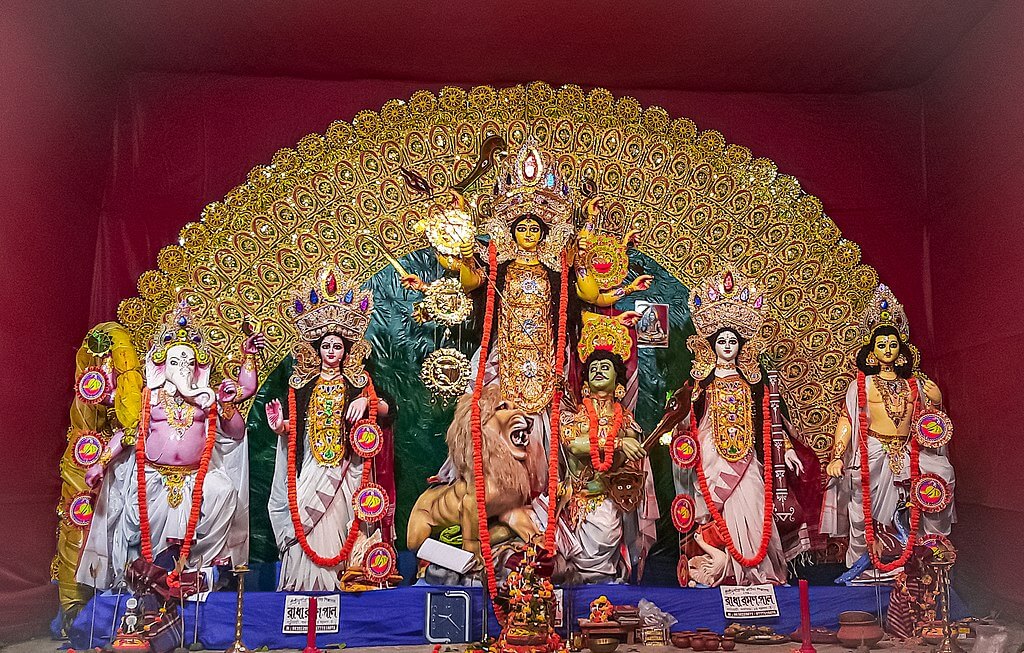
Traditional clothes change with time, as the weather conditions change. Khan mentions how people used to cycle around the city of Hyderabad wearing sherwanis in the past. Now, “it is too hot to wear a sherwani and even go in an air-conditioned car… that is how much the weather has changed.” While these might not seem like monumental changes, each is a drop of water in the ocean of India’s cultural loss.
Food, the bedrock of several cultures, is being impacted in a multitude of ways. Kurush Dalal, archeologist and culinary anthropologist, tells The Bastion that “our greed, coupled with the climate crisis, will cause a lot of problems in the future.” From the dishes we eat, to the traditions surrounding meals, our diets form a central part of our culture and customs and it is slipping through our fingers rapidly. Our oceans are increasingly becoming devoid of fish. Fishing contributes to a sense of place for certain communities and is closely tied to their sociocultural well-being.
According to Dalal, “the warming of the oceans, precipitated by the climate crisis, is affecting the reproductive cycles of fish since they can only breed and survive at a specific temperature. Our increased demand for fish leads to us catching them before they have had the chance to breed, further depleting their numbers.” Erratic rainfall patterns are another outcome of the climate crisis that affect food sources. Dalal says, “rice and wheat yields decrease while the demand for food exponentially increases every year. Additionally, unexpected winter rains along the west coast of India wash away the growing mango crop while drying grasslands increase stress on herds, requiring more animals to be slaughtered to meet demand.”
From Indifference to Concern—The Need for a Cultural Shift
The most concerning aspect of this fast-paced loss of culture is the fact that Indians barely know about it. Most examples and observations of cultural losses are anecdotal or experiential, tucked into remote corners of the country that can only be accessed by an enthusiastic journalist or the desperate entrepreneur. This is enhanced by the fact that a large part of cultural knowledge, including traditional practices, handicrafts, and recipes, are all passed down through the ages. They are not something you can look up on the internet or find in a book. They are taught and recited by those who know them, who heard them from their grandparents and who want to pass it onto their grandchildren. “What makes this nature of knowledge terrifying, and the need to preserve it more imminent, is that it takes just one generation of people to erase a tradition that has been built over centuries,” says Morarka.
After this avalanche of information, one might wonder, ‘Why bother at all? So what, if the Taj Mahal yellows or Ajrakh prints become rarer? What is it to me?’ While these changes do affect the Indian economy by drastically reducing tourism, it is more than just that. India’s cultures and people change every one hundred kilometres. These diverse cultures lend an identity, a sense of belonging.
Iyer describes how a similar pattern to the block-printed outfit that she wears today can be found on the 400-year-old wall murals at Lepakshi, in Andhra Pradesh. But it is more than just that. “It is about having a bond, an emotional connect, with your surroundings through memories and stories,” says Iyer. Remembering the daily train rides you took from Chhatrapati Shivaji Terminus or trailing behind your mother, her pallu tightly grasped in your fist, as you wandered through the panoply of pandals during Durga Puja are memories that connect you to these elements of our cultural heritage. Simultaneously, according to Iyer, these monuments and traditions reference larger moments in our history, from reflecting on the change of name of Victoria Terminus to Chhatrapati Shivaji Terminus, to studying the art forms used to make these pandals.
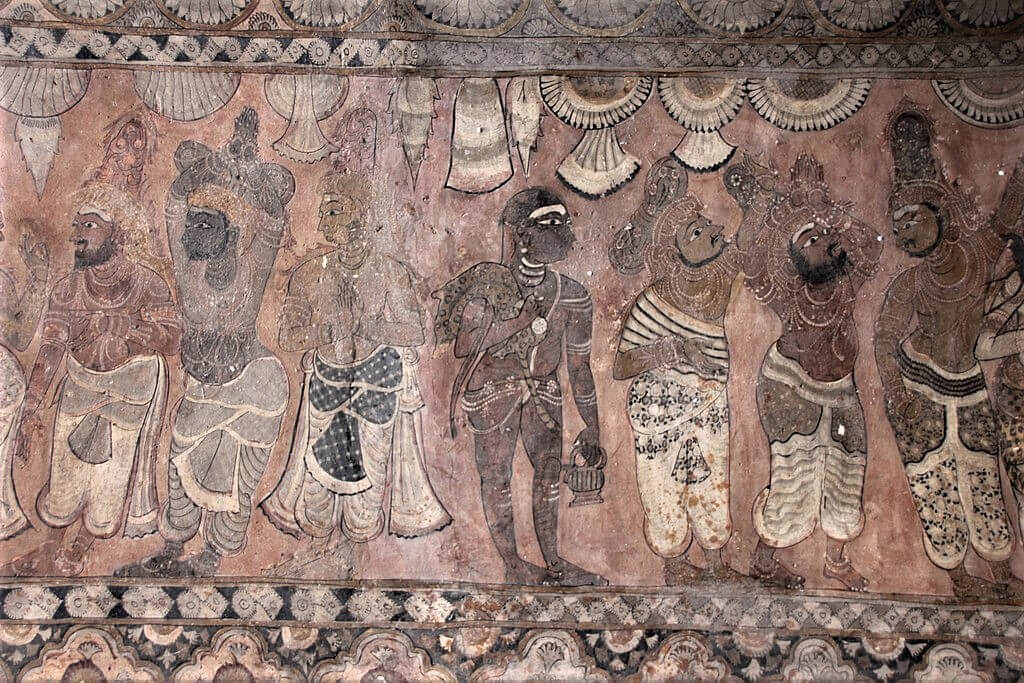
Culture is woven into every strand of our being, and losing it would be akin to losing a limb. The climate crisis has pervaded every aspect of our existence, leaving nothing unscathed. Its impact on culture, in particular, is one that has been barely noticed but perhaps might be the most crucial. Culture is what makes us human and “is a wide web that we are all connected in,” observes Iyer. Therefore, there is a need to be vocal about it. Iyer’s advice is to “write about heritage, post about heritage, speak about heritage… every one of us can do this!” It is imperative that we play our part in doing what we can. According to Dalal, “we are the sum total of our past” and if we continue to remain idle, we would be slowly losing ourselves at the hand of the climate crisis.
Featured image is a representative collage design of various elements of the Indian culture—heritage, food, clothes, livelihoods and more. Picture credit: Mikhail Esteves, Joe Ravi, David Broad, Devika, and HP Nadig via Wikimedia Commons, and Archana Bagri.


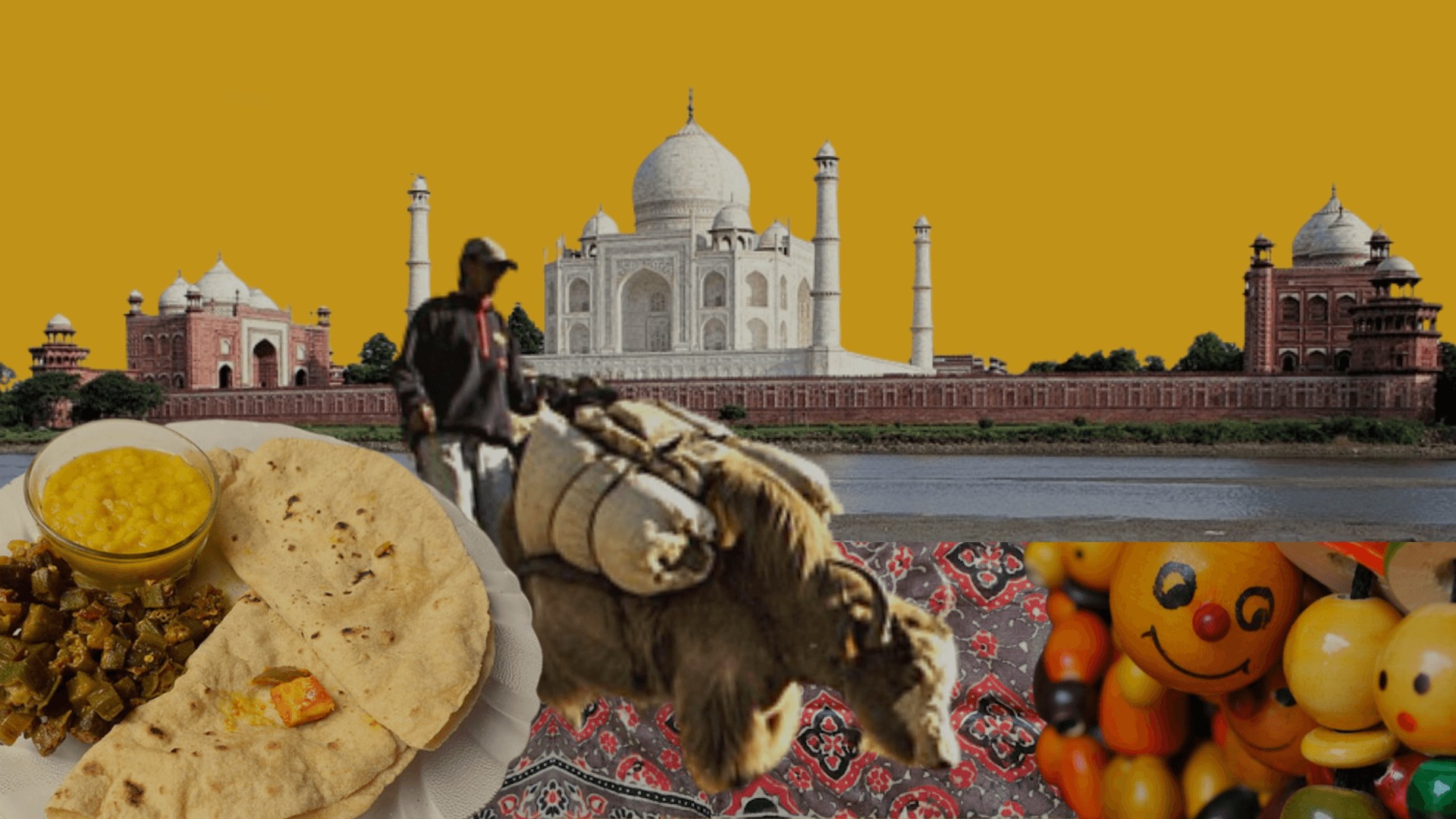




[…] we are all constantly living in it. Now let me provide some examples to contextualise my argument. Ishita Bagri’s article in the Bastion provides an excellent overview of how many culturally significant things in India are being lost to […]